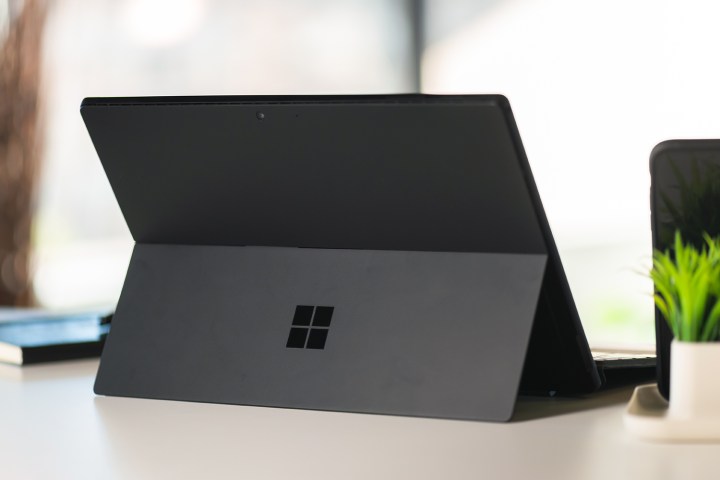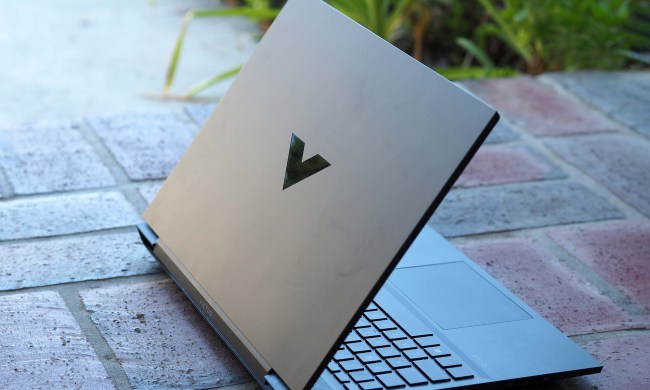If you’re looking for a premium PC that will last you throughout 2020 and beyond, the Surface Pro 7 and the Dell XPS 13 are two of the most enticing options. Microsoft’s Surface Pro 7 is our all-time favorite 2-in-1, while the Dell XPS 13 is our favorite traditional laptop. Both are powered by Windows, but there’s a lot that makes the two different.
In this head-to-head guide, we will pit the two devices against each other, helping you decide which one is right for you. Read on to determine which one is the best for you.
Design

The most obvious difference between the two is the overall design.
The Surface Pro 7 is a detachable 2-in-1 PC, meaning it’s designed to be used as a laptop with a removable keyboard, but it also functions well as a stand-alone tablet. An integrated kickstand helps prop up the Surface Pro 7 when using it both as a tablet and a laptop. Built of magnesium, it’s available in black and platinum finishes.
The Dell XPS 13 is a traditional clamshell laptop. Available in Platinum Silver and Frost, it stands out for its slimmer Infinity Edge bezels, whereas the Surface Pro 7 still suffers from larger bezels that make for a larger-than-necessary chassis. The difference is noticeable and gives the XPS 13 an edge when it comes to appearing like a modern laptop.
The biggest drawback to Microsoft’s Pro 7 is that it doesn’t include the $160 detachable keyboard, so your initial investment is the tablet unit. Meanwhile, because the XPS is a traditional laptop, what you see is what you get: No additional hardware investments needed.
Microsoft’s keyboard accessory is still plenty spacious, however. In our review, we found that despite cut off keys, it is snappy and doesn’t feel cramped. Similarly, the XPS 13’s keyboard is snappy and precise, with sufficient travel to make touch typists happy.
Both laptops have excellent touchpads with Microsoft Precision drivers for reliable Windows 10 multitouch gestures.
Performance

On the inside, the XPS 13 and the Surface Pro 7 pack plenty of Intel power. The Surface Pro 7 has an Intel 10th-generation Ice Lake Core i3, i5, or i7 CPU, depending on the configuration. These chips offer great performance and better graphics than previous generations. Meanwhile, the latest Dell XPS 13 features 11th-generation Tiger Lake Core i3, i5, and i7 processors. Equip the XPS 13 with the faster Core i7, and you have the most powerful 13-inch laptop money can buy.
Both laptops are fast enough for productivity work, and their suitability for creative applications is mixed. The Surface Pro 7 benefits from Iris Plus graphics that can help speed up any application that utilizes the GPU. The Tiger Lake CPU in the XPS 13, however, brings Iris Xe Graphics to the table, which not only has increased performance over Iris Plus but now better rivals AMD’s integrated Radeon graphics.
In terms of their displays, the XPS 13 has options for non-touch FHD+, touch-enabled FHD+, and touch-enabled UHD+. There’s no pen support, however.
The Surface Pro 7 retains the usual 12.3-inch touchscreen in the productivity-friendly 3:2 aspect ratio, and it’s plenty spacious in a resolution of 2,736 × 1,824. In our review, we found the design quite sleek, robust, and distinctive. The display was also one of the best we found in the 2-in-1 category, and it even supports Microsoft’s Surface Pen.
The 4K option on the XPS 13 pushes out more pixels than the Surface Pro 7 and is more vibrant and colorful, but it can be a big battery drainer. We recommend sticking to the model with an FHD+ panel if battery longevity is extremely important.
Finally, the XPS 13 screen measures 13.3 inches diagonally, which is slightly bigger and brings more room for multitasking than the 12.3-inch display on the Surface Pro 7.
Portability

In terms of size, the Surface Pro 7 measures 0.33 inches thick and weighs 1.70 or 1.74 pounds, depending on the configuration. Both measurements do not include the keyboard accessory. The Dell XPS 13, however, is 0.58 inches thick and weighs 2.64 pounds. Both are small and light enough that you’ll barely notice them in your backpack.
Since both devices are likely to be used while out and about, battery life is a consideration. The Surface Pro 7 lasted us about eight and a half hours in web browsing and eight hours in video playback. It easily beat out the XPS 13 released in early 2020, though we were reviewing the power-hungry 4K model. In our tests, the XPS 13 lasted about eight hours in web browsing. Still, the standard XPS 13 with the FHD+ panel could likely last longer, so that’s no reason to give it up.
Finally, the Surface Pro 7 comes with a USB-C port, a classic USB-A port, an SD card slot, Microsoft’s proprietary Surface Connect, and a 3.5mm audio jack. The XPS 13 includes two Thunderbolt 4 ports, a standard USB-C port, a microSD card slot, and a 3.5mm audio jack.
Fans of Thunderbolt connectivity will prefer the XPS 13 more, but those who aren’t quite ready for the new trend in technology will find Microsoft’s Surface Pro 7 acceptable.
Buy the XPS 13

You can get a tablet-only Surface Pro 7 for the starting price of $600, which includes a Core i3, 4GB of RAM, and a 128GB solid-state drive. If you have a higher budget, you can shell out $2,299 for a Core i7, 16GB of RAM, and a 1TB SSD. If you want to accessorize with some extra features, you can buy the Type Cover for $160 or the Surface Pen for $100.
The XPS 13 has a significantly more expensive price range with the base model costing $999. You can get a Core i3, 8GB of RAM, a 256GB SSD, and a non-touch FHD+ display for this price. For the wealthier folks, you can upgrade to a Core i7, 32GB of RAM, a 2TB SSD, and a 4K+ touch display for $2,499. It all depends on your means.
At the end of the day, we find the Dell XPS 13 to be the superior product. Although the Surface Pro 7 is a fantastic, lightweight 2-in-1 tablet and computer and offers easy portability and transportability, the XPS 13 is undoubtedly more powerful overall. 11th-generation processors accompany this model for optimal functionality and performance, increased connectivity (including the new Thunderbolt 4), and a slew of configurations. You’ll get more bang for your buck with the XPS 13 as it’s higher-quality performance and guaranteed durability.


